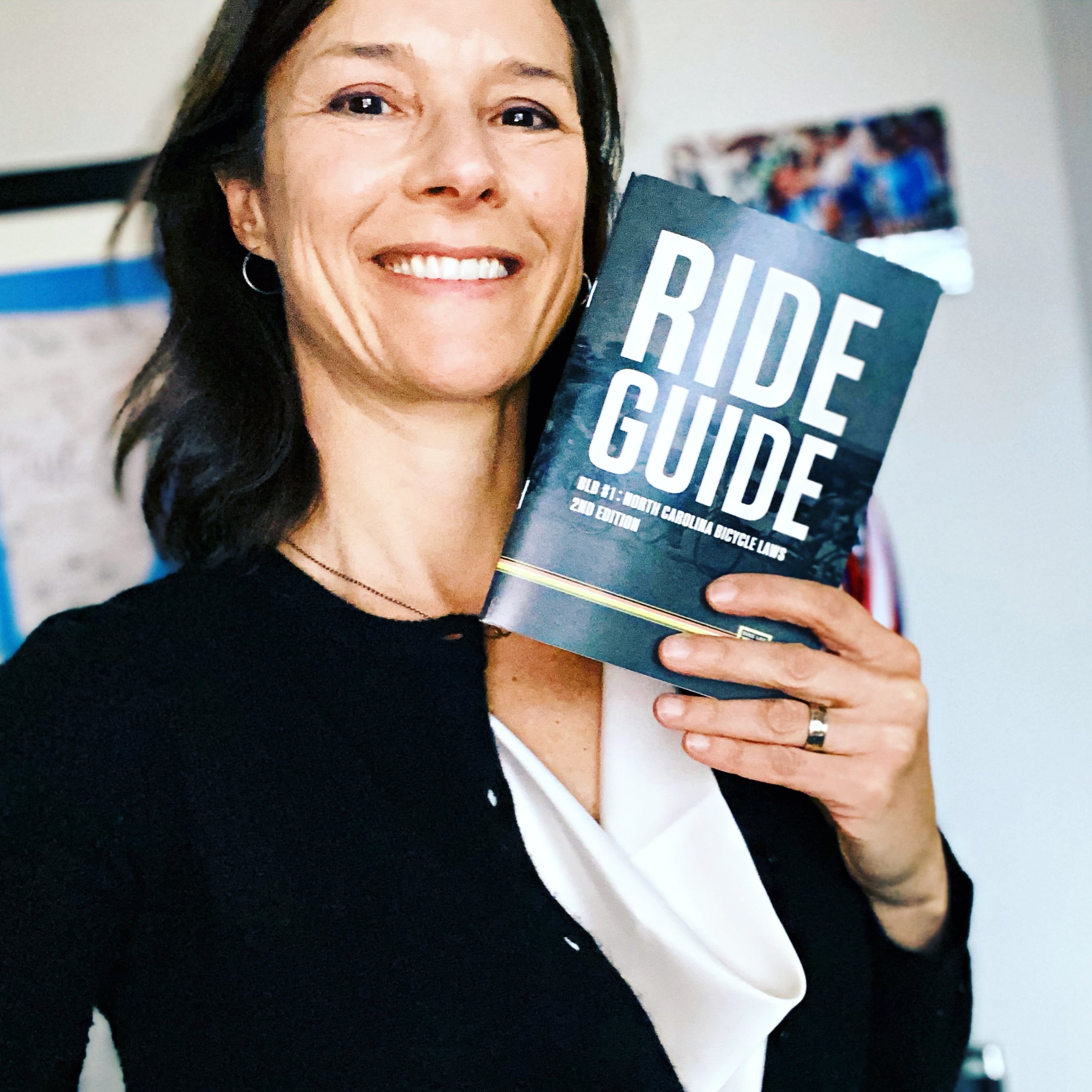From Ann in North Carolina: Hit from behind collisions are not nearly as statistically common as intersection collisions. But that doesn’t make the prospect of one any less frightening. To make matters worse, motorists often have no idea what to do when approaching a cyclist from behind and there’s plenty of confusion among cyclists as well about how we’re supposed to behave.
Well, as we learned in Law and Cycling 101 (January 13 post) if you know the Rules of the Road for Motor Vehicles, then, in North Carolina, you know most of them for bicycles as well. So drivers should treat cyclists like cars (although, I would argue, with greater care since we’re more vulnerable) and cyclists should act predictably and, as much as possible, as if they were driving a car. As a corollary, there are no laws specifically requiring cyclists to ride single file, or no more than two abreast, or to pull over to allow traffic to pass. If someone tells you there’s a law in North Carolina specifically requiring a cyclist to act a certain way, chances are pretty good he’s wrong, unless you’re having a conversation about lights or kids wearing helmets.
So where does that leave us? What do we tell the police officer who tells us we should be riding single file? Do we have any obligation to make way when we’re climbing a hill during rush hour with a pile of 20 cars behind us? Should I make an aggressive driver complaint about the guy who just passed me? (http://charmeck.org/city/charlotte/Transportation/CDOTrequests/Pages/BicyclistReportonAggressiveDrivers.aspx, in Charlotte, for example)
Staying right: First, anyone going less than the legal maximum speed limit has to drive, “in the right-hand lane then available for thru traffic, or as close as practicable to the right-hand curb or edge of the highway” except when passing or getting ready to turn left. The glaring, unanswered question, of course, is: what does “practicable” mean. Is it practicable to hug the curb when I feel (and know) I’m safer riding a few feet out into the road in order to be more visible? What if there is debris on the right? Bottom line: know this rule and use common sense when applying it. There’s a little case law on this around the country; let’s not make anyone a test case in North Carolina. Those arguments might be fun for the lawyers; not so much for the person we’re arguing for.
Passing distance: Second, South Carolina requires passing at a “safe distance.” North Carolina has a two foot passing rule. The North Carolina rule requires “at least” two feet of space when passing and no returning to the right side of the road until the passing vehicle is safely clear of the overtaken vehicle. I would argue that “at least” two feet means more feet are required in certain conditions (higher speeds, more vulnerable vehicles, ie. cyclists, etc) I may be testing that argument soon in a court of law. On the flipside, we have to give way to the overtaking vehicle – don’t speed up or intentionally block the car from passing. Again, let’s use common sense!
Passing circumstances: Third, can drivers go over the double yellow line to pass cyclists? I am asked this question often, presumably because most cyclists want to be courteous and want to waive drivers by when the driver is waiting patiently behind the cyclists. Here’s what the law in North Carolina says: NO, drivers may not cross the double yellow line to pass. Here’s the catch: there’s no criminal punishment for doing so (remember the difference between civil and criminal). But, if a driver goes over a double yellow to pass and causes a collision, you can bet that driver will be found at fault. I understand (from general practice and guy who argued very vehemently with me in Durham) that cyclists will continue to waive drivers by. If you do, use caution and beware of the potential consequences.
Golden Rule: Finally, use signals, always be predictable and be visible. Looking cool in your dark colored kit isn’t worth your life. ‘Nuff said on that.
Want to know more or hear it live, for free? Call us. Our firms are located in Charlotte, Durham and Charleston and we travel.
Safe travels!

North Carolina lawyer and Bike Law founder, Ann Groninger, has advocated at the state level on behalf of bicyclists in North Carolina for over 15 years. Ann has offices in Charlotte and Durham and has helped bike accident clients in Asheville, Raleigh, Durham, Greenville, Wilmington, Fayetteville, and throughout the state. Read more about Ann on her bio page.










